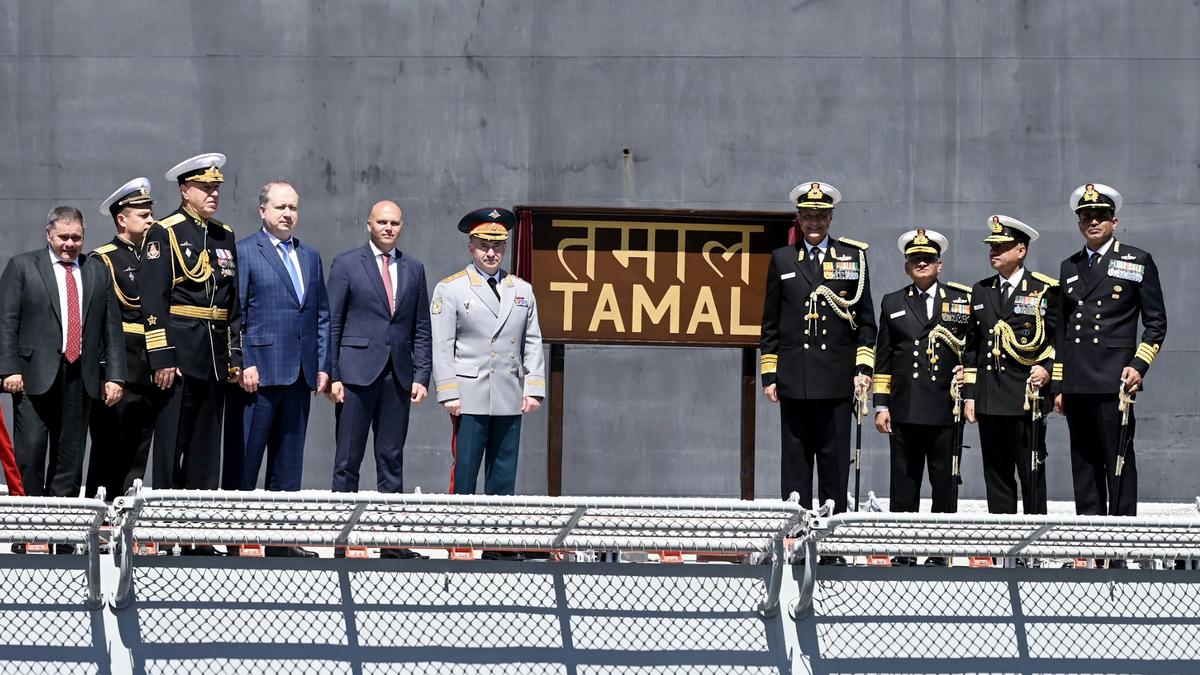Despite U.S. President Donald Trump’s claims of having vanquished Iran’s enrichment programme, the threat of a U.S.-Israel-Iran war remains alive. A combination of Israeli Prime Minister Benjamin Netanyahu’s legal problems, his government’s regional agenda, and the neoconservative influence in the U.S. threaten to overwhelm Mr. Trump’s instincts towards non-interventionist peace.
War would be disastrous for India’s economic interests and harm its ‘great power’ ambitions. If Iran’s government is toppled, U.S.-led unipolarity in West Asia would be cemented, precluding the ability of rising powers such as India to grow their strategic footprint. This touches on a fundamental schism between India and the West — Delhi’s multipolar world vision. The Trump administration offers an opportunity to address this.
What Iran’s defeat could mean
A restart of the Israel-Iran war with U.S. involvement poses some risk of regime change or Balkanization in Iran. This would dramatically alter the distribution of power in West Asia. There would remain no nation state that is both not U.S.-aligned and controls all of its territory (Ansar Allah does not control all Yemen). Regardless of how benign U.S. intentions towards India are, this would imperil the trajectory Delhi has been following for the last decade, of strengthening its strategic influence in the region. The negotiating power India held with Israel and Gulf States was underpinned by the fact that Delhi also engaged alternatively aligned states such as Syria and Iran. This has already decreased since President Bashar al-Assad’s toppling and would nosedive if Iran’s government is ousted.
All of India’s West Asia energy imports would have to be sourced from governments dependent on U.S. security guarantees, rather than from the diverse mix Delhi draws on now.
All this would harm India’s ability to rise as a great power. This is in part because reinforcing the strength of the existing global hegemon, the U.S., means a relative weakening of all rising powers. But it is also due to a fundamental clash in world visions between the American hegemon and rising India.
Before his Moscow visit, India’s External Affairs Minister revealed the basis of this clash saying the meeting with Russia would discuss “…the building of a multipolar world order”. By definition, this involves the displacement of U.S.-led unipolarity. This means that, on this crucial question, Washington’s most important Asian partner shares common cause with China and Russia.
This underlying tension bubbled to the surface recently with Mr. Trump’s threat, cheered on by NATO head Mark Rutte, to slap secondary sanctions of 100% on countries purchasing Russian oil, gas, or other strategic goods. Before this, when India commissioned INS Tamal, a warship manufactured by Russia, the U.K. paper, The Telegraph, ran the headline ‘India is an enemy, not a friend or a neutral’. When it comes to fundamental questions of geopolitics, the corporate media in the West reflects the views of the foreign policy establishment.
A multipolar world order, in which India is one of the poles, constitutes one of the principal pillars of New Delhi’s foreign policy. India’s main motivation for supporting partnering with the U.S. — balancing against the China threat — does not outweigh the multipolarity goal. This shapes India’s interests, not only in relation to Iran and to West Asia, but also the New Cold War more broadly and the hot wars that will in future spring from it. It has been most clear in India’s defiance of Western demands regarding isolating Russia.
Going forward, the multipolarity goal will play a greater role in informing Delhi’s policy choices, thus inhibiting actions that reinforce U.S.-led unipolarity. Therefore, even given the existing strategic autonomy preference, it looks increasingly less likely that India will align with the Western bloc. Moreover, Delhi likely perceives its clashing worldview with Washington as amplifying U.S. and Western offensive intentions towards India.
Path to peace
On Iran, India should urge restraint. This can include highlighting that disruption of West Asian oil supplies would weaken India relative to China, which is less dependent on imports — thus harming U.S. interests in Asia. It may also involve quid pro quo. As seen in relation to U.S. attempts to isolate Russia over Ukraine, where India sits on any conflict can impact the collective West’s interests.
More fundamentally, India should impress on Washington that the U.S. and its allies can best serve their security and economic interests by accepting global multipolarity. When considering the alternatives of kinetic great power war, or (though less likely) Chinese hegemony over Asia and Africa, multipolarity is far from the worst scenario from the West’s view.
The present moment offers possibility in this regard. Despite the recent dithering on detente with Russia, Mr. Trump knows he was elected on a compatible foreign policy platform of non-interventionism. Secretary of State Marco Rubio acknowledged early on that the world is moving towards multipolarity. Polls show that Americans, particularly Mr. Trump’s base, view the country’s vital interests as homeland and near abroad-centred. This translates to tolerance of other poles maintaining hegemony within their own regions.
As the most powerful independent state that the U.S. regards as a partner, Indian suasion would carry weight.
Kadira Pethiyagoda, author, geopolitics expert at the University of Melbourne, former diplomat, and political advisor (@KPethiyagoda)
Published – July 22, 2025 02:02 am IST
